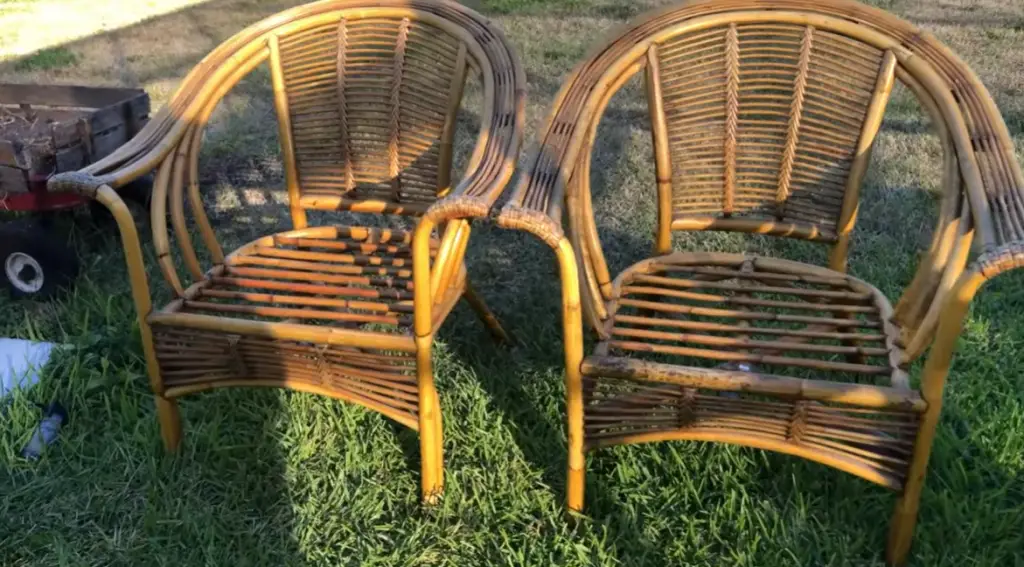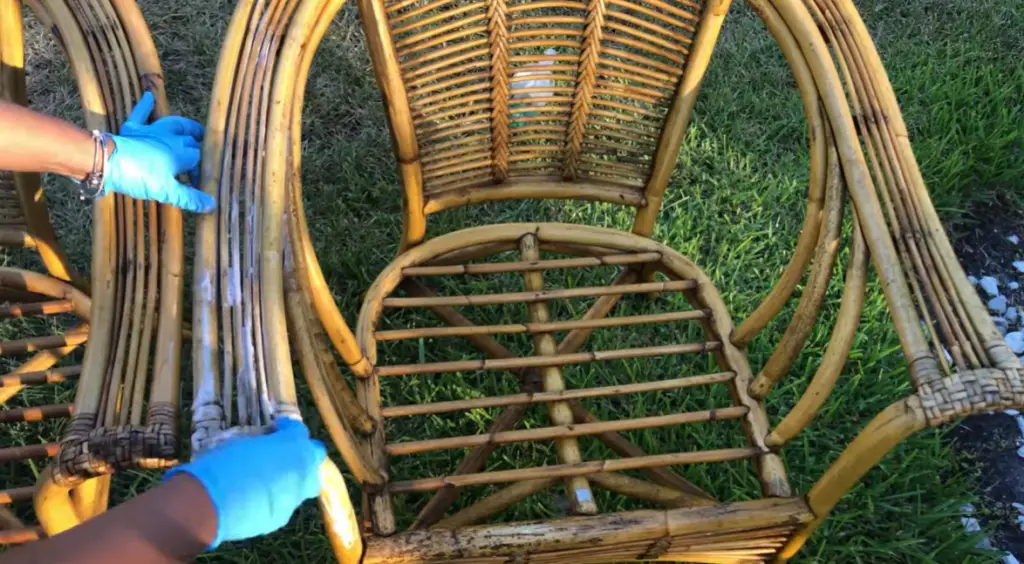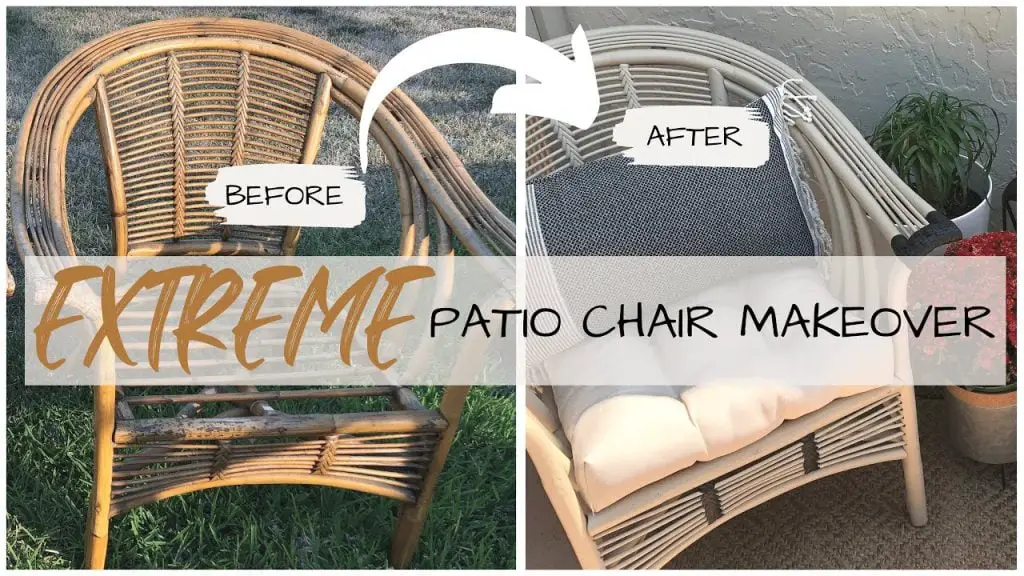How to Clean Cane Chair Seats, begin by gently dusting with a soft brush or vacuum using a brush attachment. Wipe the cane with a damp cloth, using mild soap for any stains, and let it dry thoroughly.
Cane chair seats offer a timeless elegance that complements any home decor style. With their unique woven texture and durable design, they are a popular choice for both indoor and outdoor furniture. However, to maintain their beauty and longevity, proper cleaning is essential.
Regular maintenance not only keeps them looking their best but also prevents the buildup of dirt and grime that can weaken the cane fibers over time. Given their delicate structure, it is crucial to use gentle cleaning methods. Simple routine care of your cane chair seats will preserve their natural aesthetic and ensure they remain a cherished part of your home for years to come.
Introduction To Cane Chair Care
Cane chairs add a touch of elegance and natural beauty to any room. However, like any furniture piece, they need proper care to maintain their appearance and durability. This post guides you through the essentials of cleaning cane chair seats, ensuring your beloved chairs stay in tip-top shape.
Understanding Cane Materials
Cane is a natural material derived from the rattan vine. It’s prized for its strength, flexibility, and lightweight properties. Cane seats are made by weaving strands together, creating a supportive yet breathable surface. Knowing what cane is and its characteristics helps in choosing the right care methods.
Benefits Of Regular Maintenance
Regularly cleaning your cane chair seats provides numerous benefits:
- Extends Lifespan: Prevents build-up of dust and grime.
- Promotes Hygiene: Reduces allergens like dust mites.
- Enhances Appearance: Keeps cane looking fresh and clean.
- Structural Integrity: Protects against damage from spills and humidity.
Assessing Your Cane Chair Condition
Assessing Your Cane Chair Condition is the crucial first step before diving into cleaning. It ensures that you approach the cleaning process properly without causing further damage. It’s essential to understand what sort of wear your chair has undergone. This step will save you both time and effort in maintaining the beauty and longevity of your cane chair seats.
Identifying Common Types Of Damage
Cane chair seats may showcase various damage types. Look out for the following signs:
- Sagging – A common issue where the cane material stretches over time.
- Cracking – Dryness can cause the cane strands to snap and splinter.
- Discoloration – Sunlight or spills might have tarnished the original cane color.
- Broken strands – This could be a result of heavy usage or accidents.
- Mildew – Caused by moisture, it may appear as a fuzzy growth on the material.
Note any of these issues before proceeding to clean your chair, as they will determine the methods to apply.
Deciding On The Level Of Cleaning Needed
Based on the condition of your chair, decide on the cleaning level. Is it a light dusting or a deep wash? Consider these points:
| Level of Cleaning | Description |
|---|---|
| Light Dusting | For minimal dirt and debris, quick surface cleaning suffices. |
| Spot Cleaning | Target specific stains without affecting the entire chair. |
| Deep Cleaning | When extensive damage or dirt is present, a thorough cleaning is necessary. |
Choose the most appropriate cleaning level to avoid damage and ensure effective results.
Gathering The Right Cleaning Supplies
Caring for cane chair seats starts with preparation and the right supplies. A well-chosen arsenal of cleaning agents and tools brings out the beauty of the material. This guide helps to gather items for effective and safe cleaning.
Natural Vs. Chemical Cleaners
Deciding between natural and chemical cleaners is crucial. Natural solutions, like vinegar and soap, are gentle on the cane. Chemical cleaners offer deep cleansing, but they can be harsh. Consider the condition of your cane seat before choosing.
- Vinegar Solution: Mix water with white vinegar for a natural clean.
- Mild Soap: Use non-abrasive soap for grime without damage.
- Specialized Cane Cleaners: Seek products designed for cane material.
Tools For Effective Cleaning
The right tools make cleaning hassle-free. Soft brushes and cloths protect the cane’s fibers. Use a toothbrush for corners and crevices. Microfiber cloths are best for drying.
| Tool Type | Usage |
|---|---|
| Soft-Bristled Brush | Loosens surface dirt gently. |
| Old Toothbrush | Cleans tight spots and details. |
| Microfiber Cloth | For drying without scratching. |

Pre-cleaning Procedures
Before diving into the cleaning process, it’s crucial to prepare the cane chair seats. These steps help protect the material and ensure effective cleaning. Follow these simple pre-cleaning steps to set the stage for refreshingly clean cane seating.
Removing Surface Dust And Debris
Start by removing loose dust and debris. This makes the deep cleaning process smoother and more effective.
- Use a handheld vacuum with a soft brush attachment.
- Gently go over the cane surfaces.
- Reach into crevices where dust might hide.
- If a vacuum isn’t available, a soft bristle brush is a good alternative.
Precautions To Prevent Damage During Cleaning
Protect your cane chair seats with these preventive measures:
- Avoid excessive water, which can warp cane.
- Test cleaning solutions on an inconspicuous area first.
- Do not use harsh chemicals that could strip the cane’s natural oils.
- Maintain structural integrity by supporting the underside during cleaning.
| Do | Don’t |
|---|---|
| Use mild soap and water | Submerge in water |
| Blot dry with soft cloth | Expose to direct sunlight for long periods |
Following these tips will prepare your cane chair for a thorough clean, keeping it sturdy and beautiful for years to come.
Deep Cleaning Techniques For Cane Chairs
Revitalizing your cane chairs can be a gratifying endeavor. Cane chair seats, with their intricate weaves, can accumulate dust and grime over time. A deep clean not only enhances their appearance but also extends their longevity. Discovering efficient cleaning techniques will breathe new life into your favorite seating.
Hand-washing Methods For Surface Grime
Regular hand-washing is essential to maintain the delicate weave of cane chairs. Here’s a straightforward guide to hand-washing your cane chair seats.
- Vacuum gently with a brush attachment to remove loose dust.
- Prepare a mild soapy solution using dish soap and warm water.
- Use a soft-bristled brush to apply the suds on the surface.
- Scrub softly in a circular motion, focusing on grime buildup.
- Wipe with a damp cloth to remove soap; never overwet the cane.
- Dry naturally in a well-ventilated area away from direct sunlight.
Dealing With Stubborn Stains And Spills
Stubborn stains require special attention. An effective stain removal process ensures a spotless finish without damaging the cane.
- Blot spills immediately with a clean, dry cloth to prevent soaking.
- Mix equal parts of water and white vinegar for a natural stain remover.
- Apply the mixture with a sponge to the stained area.
- Let it act for a few minutes, then rinse with a damp cloth.
- Dry promptly with a soft towel and allow further air-drying.
Always spot test any cleaning solution in an inconspicuous area first to ensure it does not damage the natural material.
Rinsing And Drying After Cleaning
Cane chair seats need gentle care. After cleaning, proper rinsing and drying are crucial. The final steps help maintain the chair’s integrity and appearance. Follow along to learn the best rinasing and drying techniques for your cane furniture.
Proper Rinsing Techniques
Remove soap residues effectively. Use these steps:
- Spray lightly with clean water. Avoid soaking the cane.
- Wipe with a damp cloth. Ensure water spreads evenly.
- Repeat if necessary. Soap should not remain on the cane.
Ensuring Thorough Drying To Avoid Damage
To prevent warping or mold, cane must dry fully. Use these tips:
- Air dry naturally. Place chair in a well-ventilated space.
- Avoid direct sunlight. Ultraviolet rays can harm cane.
- Do not use heat. Hair dryers or heaters can cause cracking.
- Check regularly. Ensure cane is drying evenly.
Maintaining Cane Chair Seats
Owning cane chairs adds a touch of elegance to any space. To keep their charm, it’s essential to maintain the cane. Proper care ensures they last longer and stay beautiful. Let’s explore how to keep your cane chair seats in pristine condition.
Regular Dusting And Vacuuming Tips
Dust accumulation is a primary concern for cane chairs. It can lead to a drab appearance and even damage over time.
- Use a soft brush: A soft-bristled brush dislodges dust without harming the cane.
- Vacuum with a brush attachment: This attachment gently cleans surfaces without snagging delicate strands.
| Tool | Function |
|---|---|
| Brush | Removes Loose Dust |
| Vacuum | Clears Fine Particles |
Moisture Control And Prevention
Cane’s worst enemy is excess moisture. It can lead to sagging and mildew. Proper moisture control is crucial.
- Avoid Humidity: Keep chairs in a room with stable humidity.
- Mildew Check: Inspect regularly for signs of mildew, and clean promptly.
- Dry Thoroughly: After cleaning, ensure the cane is completely dry before using it again.
To sum up, regular dusting, careful vacuuming, and moisture control will keep your cane chairs fresh and strong. With these simple steps, cane chairs can grace your home with their natural beauty for years.
Repair And Restoration Tips
Cane chair seats are prized for their beauty and durability. Yet, they may require repairs over time. This section provides valuable tips for addressing minor damage and guides on when professional restoration might be necessary.
Addressing Minor Cane Damage
If you notice small breaks or loose ends in the cane, act fast. These quick fixes can prevent further damage:
- Clean the area. Use a soft brush to remove dirt.
- Apply glue. Clear wood glue can fix small breaks.
- Clamp it. Use a clamp to hold pieces until the glue dries.
- Trim excess. Cut away any loose ends once secure.
For fraying, dampen the cane lightly and gently press it back into place. Allow it to dry naturally, ensuring it regains tension and remains flat against the chair frame.
When To Seek Professional Restoration
Some damage calls for expert attention. Consider a professional restoration if you encounter the following issues:
| Issue | Action |
|---|---|
| Large breaks | Restoration specialists can weave and replace sections. |
| Sagging | A pro can retighten and reweave the seat. |
| Severe wear | Full re-caning ensures a lasting and robust seat. |
| Mold or rot | Special cleaning and repair are necessary to save the chair. |
When the damage is beyond a quick fix, or the chair holds sentimental value, trust a professional. They have the tools and expertise to bring your cane chair back to life.
Protective Measures For Cane Chairs
Cane chair seats are beautiful and delicate additions to any home. With their natural and airy appeal, they invite a touch of elegance into a space. Yet, their intricate weaves require careful maintenance to stay charming. Implementing protective strategies for these cherished pieces is crucial to extend their life and aesthetic value. From sealants to covers, let’s explore how to safeguard cane chair seats effectively.
Choosing The Right Sealants
Preserving cane materials against wear and moisture is essential. Sealants play a vital role in this defense. Be selective in the product to ensure compatibility with the cane’s natural fibers.
- Water-based sealants are gentle on the cane and dry quickly.
- Varish adds a durable layer while enhancing the cane’s color.
- Linseed oil nourishes the fibers, keeping them supple.
Apply sealant annually. Test on a small area before covering the entire seat.
Using Cushions And Covers
Adding cushions and covers is not only about style. It’s a functional measure to prevent damage from direct contact and spills.
| Cushion/Cover Type | Benefits |
|---|---|
| Seat pads | Distribute weight evenly, reduce stress on weaves |
| Slipcovers | Shield surface from dust and stains |
| Weather-resistant covers | Protect outdoor cane furniture from the elements |
Choose covers that fit snugly to avoid movement and potential snagging. Ensure they are breathable to prevent moisture build-up which could lead to mold.

Seasonal Care And Storage Advice
Proper care keeps cane chair seats looking great for years. Discover tips for handling and storing cane chairs through changing seasons. Seasonal changes impact cane furniture. With the right approach, preserve their beauty and function.
Handling Cane Chairs During Humid Seasons
Moisture can be a friend or foe to cane chairs. Humid climates pose a threat. Without care, cane can sag or mildew. Follow these steps to protect your chairs:
- Avoid Direct Contact: Keep chairs away from damp floors. Use rubber caps on legs.
- Circulate Air: Ensure good airflow. A dehumidifier helps in enclosed spaces.
- Regular Wiping: Clean with a damp cloth. This stops buildup of dust and moisture.
Balance moisture levels. Too dry or too wet can damage. Condition with a mist of water if too dry.
Storing Cane Chairs Properly
Storing your cane chairs right is crucial. Here’s how to prevent damage and maintain structure:
| Action | Benefit |
|---|---|
| Clean Before Storing | Removes debris that can scratch or imbed. |
| Cover Them Up | Keeps off dust and prevents fading. |
| Store In Dry Area | Avoids mold and structure damage from humidity. |
Raise off the ground on pallets. Position chairs upright to maintain shape. Never stack them high. It can twist or bend the cane.
Follow these tips for the best care for cane chair seats. Seasonal adjustments protect your chairs all year round. Clean, check, and store your cane furniture with these methods.
Common Mistakes To Avoid In Cane Chair Cleaning
Maintaining the charming appearance of cane chairs requires careful cleaning. Mistakes in the cleaning process can damage the cane and reduce the chair’s lifespan. To keep your cane chairs in top condition, avoid these common cleaning errors.
Over-wetting The Cane Material
Cane loves moisture, but too much water can cause serious damage. Excessive wetting can lead to sagging and potential mold growth. Use a damp cloth for cleaning and wipe the cane gently. Allow the chair to dry naturally in a well-ventilated area but not under direct sunlight, as that can lead to discoloration.
Using Harsh Chemicals And Scrubbing Tools
Harsh chemicals and abrasive tools risk harming the delicate weave of cane chair seats. Stick to gentle, natural solutions like mild soap and water for regular cleaning. Soft brushes or cloths can dislodge dirt without causing damage. Chemical cleaners and scouring pads might strip away the finish or fray the material, leading to costly repairs or even the need for a complete re-caning.
Conclusion: Ensuring Longevity Of Cane Chair Seats
Proper care extends the life of cane chairs. These steps keep them looking fresh:
- Clean gently with soap and water.
- Avoid heavy weight to prevent sagging.
- Shield from excess moisture and direct sunlight.
- Regular maintenance wards off damage.
Summarizing Key Takeaways
Let’s recap the essentials for cane chair care:
- Mild cleaning: Use soft cloth and mild detergent.
- Weight management: Don’t overload seats.
- Damage prevention: Protect from harsh elements.
Additional Resources For Cane Furniture Enthusiasts
Want more tips? Check these out:
- Detailed guides on cane furniture restoration.
- Forums for DIY cane repair techniques.
- Online communities to share cane crafting ideas.

Frequently Asked Questions For How To Clean Cane Chair Seats
What Is The Best Way To Clean Cane Chair Seats?
Cane chair seats can be effectively cleaned with mild soap and warm water. Use a soft brush to gently scrub the surface, then rinse with clean water. Allow the chair to air dry, avoiding direct sunlight to prevent drying out the cane.
Can Vinegar Clean Cane Seat Chairs?
Yes, vinegar can clean cane seat chairs. Mix equal parts of white vinegar and water. Apply the solution with a soft cloth and wipe the chair. Rinse with water afterward and dry thoroughly to prevent damage to the cane.
How Often Should Cane Chair Seats Be Cleaned?
It’s ideal to clean cane chair seats every few months or when they appear dirty. Regular maintenance prevents dirt buildup and preserves the chair’s appearance and longevity. Treat spills immediately to avoid staining.
What Materials Are Safe To Use On Cane Chairs?
Soft cloths or brushes and mild detergents are safe for cleaning cane chairs. Avoid harsh chemicals and abrasive tools that can damage the cane. Always follow with a thorough rinse and dry to maintain the integrity of the material.
Conclusion
Restoring the charm of cane chair seats is straightforward with the right approach. Embrace these steps to ensure your furniture remains both stunning and durable. Keep it simple, clean regularly, and your cane chairs will be a showcase of your dedication to fine craftsmanship.
Enjoy the fresh look of your refreshed seats!

